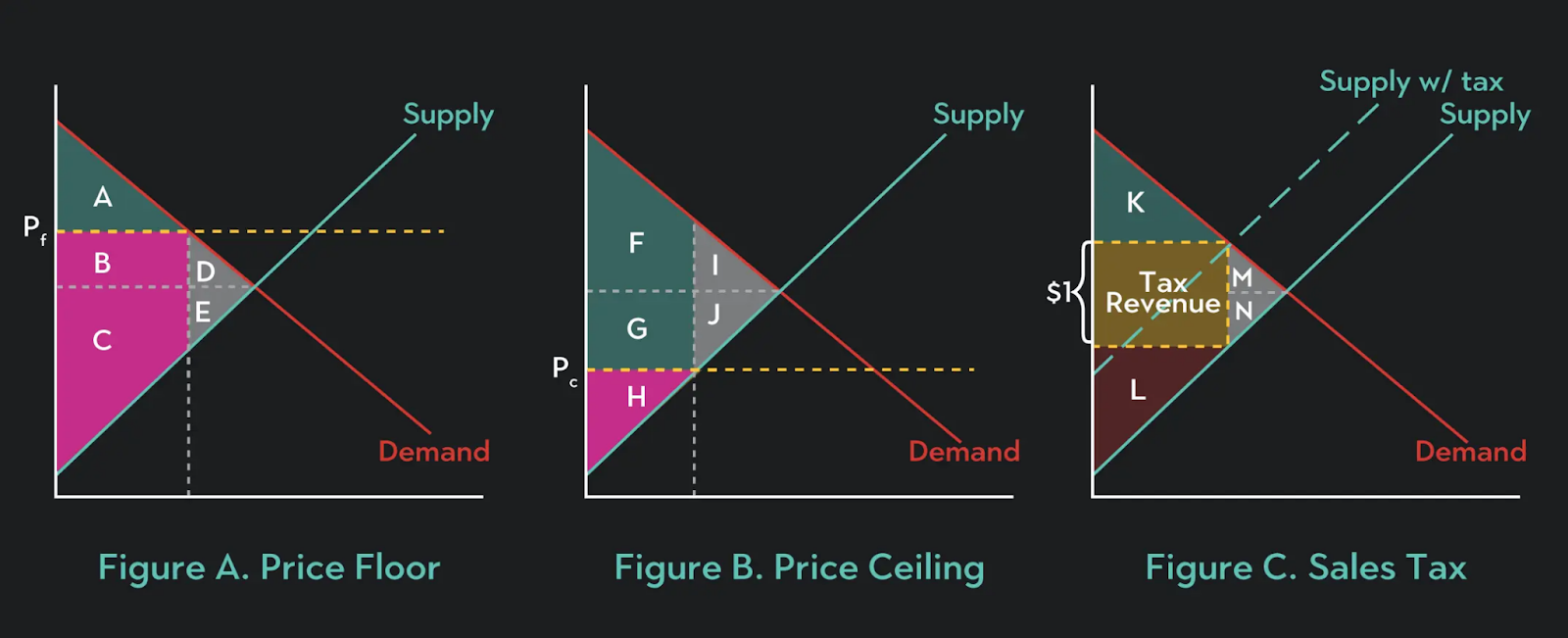
Taxes
Let’s talk about taxes.
The reason you see tax policy being so contentious as a contemporary issue is because it’s a delicate balance. Economists have long argued about the tradeoff between equity and efficiency in taxes. Efficiency in economics means that society gets the maximum possible benefit from scarce resources, whereas equity indicates that the benefits of those resources are equally distributed. Oftentimes, policies that promote equity often decrease efficiency, and vice versa.
In terms of tax structure, there are three main types. You’ve probably heard the term “progressive,” and it just means that the tax rate increases as income increases. A regressive tax system is the exact opposite: the tax rate decreases as income increases. And a proportional or flat tax is one where everyone pays the same percentage of income. Remember, these classifications are based on PERCENTAGE of income, not absolute amounts.
An excise tax is a tax on EACH UNIT of a good or service. Some examples include taxes on gas to reduce emissions and various types of sin taxes. It’s here that we can employ marginal analysis. A tax, depending on whether it’s levied on consumers or producers, will either shift the supply curve or demand curve to the left.
Source: Outlier
Take a look at figure C in this image. Notice how the imposition of the tax creates both DWL (M + N) and tax revenue for the government. Importantly, even though the tax is levied on producers (which is why it shifted supply, not demand), both producer surplus AND consumer surplus are reduced by the tax.
That’s where the concept of tax burden or tax incidence, which is just how much a tax impacts an individual or business, comes into play. The side that is more inelastic will experience a greater burden. Look at the cigarettes market, for instance, which is highly inelastic because nicotine is addictive. Even when taxes are placed on the producer, more tax incidence is passed on to the consumer in the form of price increases. The opposite principle can be applied to the hotel market, in which supply is more inelastic since hotel owners can’t just build more hotel rooms to meet new demand. The tax burden falls mostly on the producer in that case.
Regardless of who the burden falls on, the main takeaway of taxes is that they increase government revenue at the expense of economic surplus.
